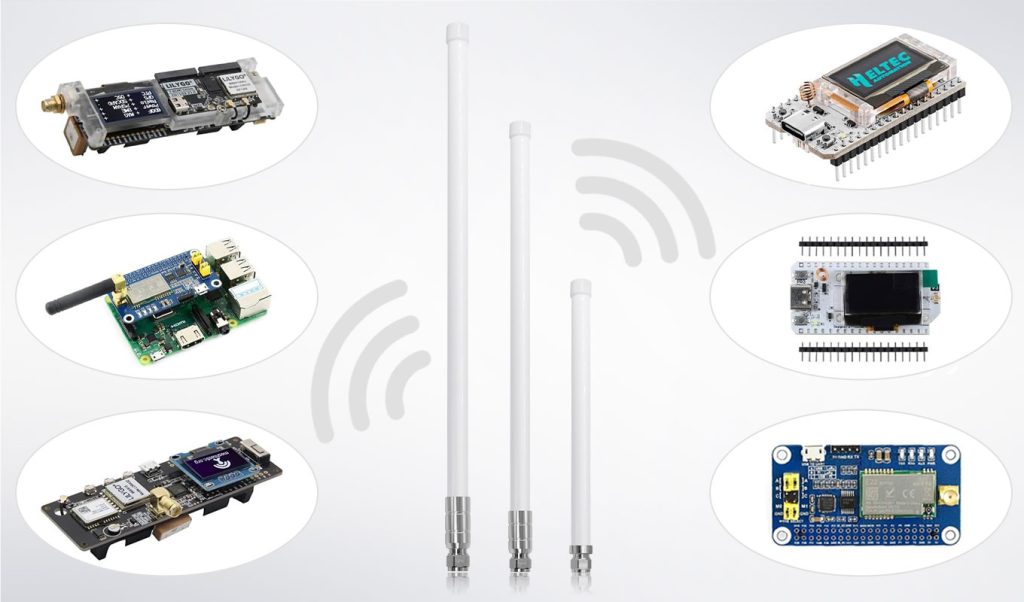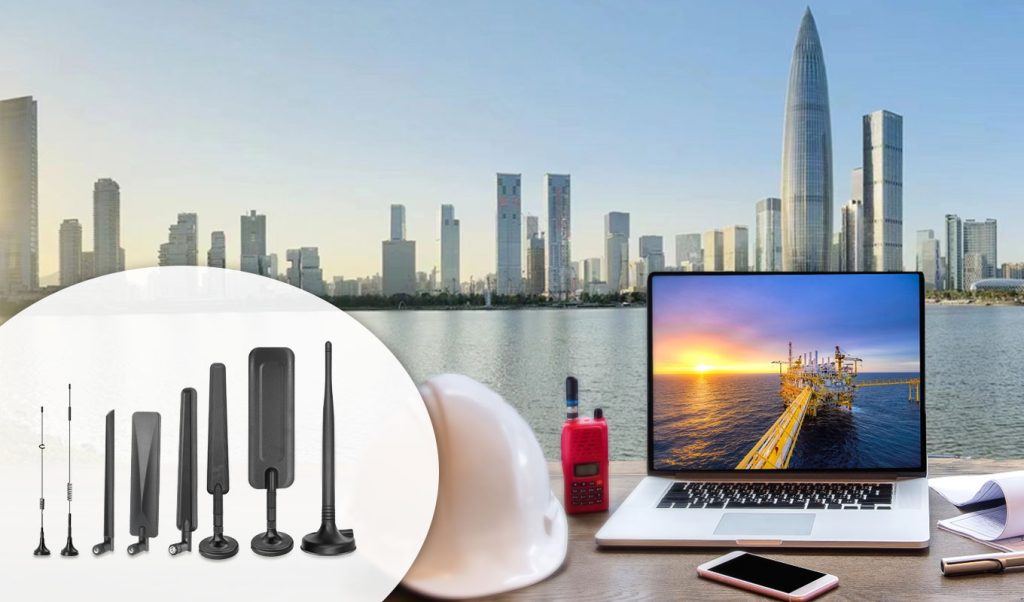When we talk about the main part of long-range Internet of Things (IoT) communication, Low Power Wide Area Network (LPWAN) technologies are mentioned a lot. LPWAN solutions are now needed for connecting devices over big areas, and they use very little power. Two of the top LPWAN technologies are LoRaWAN and NB-IoT, and each has different features that change how antennas are designed. So, in this article, we’ll look closely at LoRa and NB-IoT antennas, checking their differences in frequency bands, design needs, and the job antennas have in making long-range communication work.
A Quick Look at LoRa vs. NB-IoT
| Aspect | LoRa Antennas | NB-IoT Antennas |
| Frequency Bands |
|
|
| Deployment |
|
|
| Design Characteristics |
|
|
| Common Antenna Types |
|
|
| Power Consumption |
|
|
| Outdoor Applications |
|
|
| Indoor/Embedded Applications |
|
|
LoRa Antennas
LoRa antennas are made for long distance ong-distance communication in unlicensed frequency bands. They often work in frequencies like US 915 MHz, EU 868 MHz, etc., and the antennas must be optimized to suit these ranges for reliable performance. These bands fall under the ISM band. The ISM band lets people use them without a license, but it can have potential interference. This is especially true in cities.
LoRa antennas usually uoperate in the sub-GHz range. The size of the antenna depends on what kind it is and what it is used for.
- PCB/FPC-type antennas, commonly used in embedded LoRa nodes, are compact—typically around 2 to 5 cm in length. These are ideal for space-limited devices and indoor IoT nodes.
- Stick or whip antennas used for LoRa gateways or outdoor nodes are taller, usually around 19 cm, offering better range and signal stability.
- Fiberglass antennas—designed for permanent outdoor gateways—can reach 50 cm to 1.5 meters in length. These provide high gain and wide omnidirectional coverage, even in harsh weather.
To support long-range communication, LoRa antennas often focus on high gain and efficiency. External antennas are most common in gateway setups, where extended range is required. For example, fiberglass omnidirectional antennas are favored for outdoor installations due to their durability and broad coverage. For compact devices, helical coil or FPC antennas are used to balance size and signal performance, making them suitable for integrated applications.

NB-IoT Antennas
NB-IoT operates over licensed cellular frequency bands. These are like 700 MHz, 800 MHz, and 900 MHz. It depends on the region and carrier. These bands are narrower and more controlled than LoRa’s ISM bands. Since NB-IoT is deployed over existing cellular infrastructure, the antenna needs to work with carrier-assigned frequencies.
NB-IoT antennas don’t look special. They can look like swhip antennas, patch antennas, or FPC/PCB embedded types, just like antennas used in LoRa applications.
- Broadband Compatibility: Since NB-IoT may span multiple LTE-related bands (e.g., B5, B8, B20), the antenna often needs broad frequency coverage and consistent performance across these bands.
- Embedded Integration: In compact modules such as water meters, asset trackers, or smart locks, antennas are often embedded. FPC or PCB antennas are tuned specifically to NB-IoT’s working band, with layout and matching circuits handled carefully at the board level.
- Carrier Certification Sensitivity: Because NB-IoT devices must often pass carrier-level testing, antennas must meet strict performance specs on metrics like VSWR, TRP, and TIS.
A whip antenna mounted externally may work in both LoRa and NB-IoT devices if tuned properly. Likewise, an FPC antenna could serve either protocol depending on its target frequency and layout integration. Size alone doesn’t determine the antenna’s protocol compatibility—frequency response and impedance matching are what matter most.

Technology Comparison: NB-IoT vs. LoRa at a Glance
While LoRa and NB-IoT antennas may sometimes look similar in shape or integration style, their underlying technologies differ widely. Here’s a quick technical breakdown across key parameters:
| Feature | NB-IoT | LoRa |
| Operating Frequency | Licensed bands (e.g., B3, B5, B8) | Unlicensed ISM bands (e.g., 433 MHz, 868 MHz, 915 MHz) |
| Network Architecture | Cellular infrastructure (carrier-based base stations) | Private network using self-deployed LoRaWAN gateways |
| Communication Range | 1–10 km (depends on base station coverage) | 2–15 km (varies with terrain and environment) |
| Power Consumption | Low power, though higher than LoRa in most cases | Ultra-low power (battery life can exceed 5–10 years) |
| Data Rate | Low (kbps level), but often faster than LoRa | Very low (typically 0.3–50 kbps) |
| Module Cost | Higher cost, requires SIM card | Lower module cost, no SIM card needed |
| Application Scenarios | Smart metering, smart cars, precision agriculture | Remote monitoring, smart cities, environmental sensing |
Beyond LoRa and NB-IoT: What About Sigfox and UHF?
While LoRa and NB-IoT dominate LPWAN deployments, Sigfox deserves mention as another lightweight, low-power protocol operating in similar unlicensed sub-GHz frequencies. It’s often used for extremely low-data-rate applications like smart parking sensors, environmental monitors, or simple asset tracking.
Sigfox typically operates in:
- 868 MHz (Europe)
- 902 MHz (North America)
- 923 MHz (Asia-Pacific)
Like LoRa, Sigfox runs within ISM bands, and antenna types such as whip antennas or FPC patches can be shared between protocols—provided the antenna is properly tuned to the target frequency.
Additionally, UHF is a broader term encompassing most LPWAN operating bands. Many commercial antenna listings use “UHF” as a generic label for products compatible with LoRa, Sigfox, or even RFID. But actual performance depends on frequency precision, impedance match, and gain—not just naming.
When working across protocols or regions, antenna suppliers like Aboosty offer multi-band UHF antennas that are pre-tuned for common LPWAN deployments, reducing signal loss and simplifying integration.
Maximize Coverage Through Smart Antenna Integration
Whether your system is based on LoRa or NB-IoT, antenna design directly impacts long-distance communication performance. For LoRa, high-gain external antennas perform well in outdoor and wide-area deployments, especially for gateways and devices operating in long-range or non-line-of-sight environments.
In contrast, NB-IoT is often embedded in compact terminals, where small internal antennas—such as FPC or PCB antennas—are commonly used to balance power efficiency and form factor constraints. For some use cases with limited signal strength or harsh indoor conditions, external antennas may also be considered to improve reception quality.
Aboosty has deep technical experience in both LoRa and NB-IoT antenna systems, and delivers customized antenna solutions that help optimize network performance. Whether you need a LoRa external antenna to expand coverage or an NB-IoT compact embedded antenna to strike a balance between integration and efficiency, Aboosty can develop tailored designs that meet your project’s spectrum requirements, use scenarios, and device structure—improving stability and transmission across longer distances.
